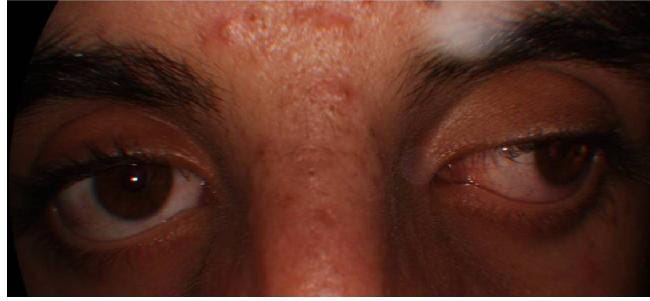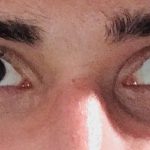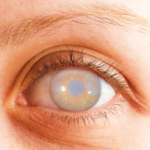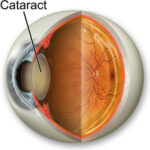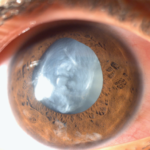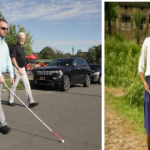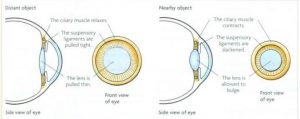Introduction– Sensory exotropia is a condition of unilateral divergence as a sequela to loss of vision or long-standing poor vision in one eye.
Cause– sensory exotropia occurs when there’s an imbalance in eye muscles or when there’s a signaling issue between the brain and eye. Sometimes a health condition, like cataracts or stroke, can cause this to occur. The condition may also be inherited.
Approximately 30% of children with strabismus have a family member with the condition. When no family history, illness, or condition can be identified, doctors aren’t sure what causes a strabismus like sensory exotropia to develop.
It’s not through be coused by watching TV, playing video games, or doing computer work. But these activities can make the eyes tired, which can cause exotropia to worsen.
1.Refractive error.
- Unilateral aphakia.
- convergence insufficiency.
- Other organic reason.
Signs–Mostly the first signs of sensory exotropia appear during childhood. The common symptoms include:
Decreased vision, either due to refractive error, disorder in the eye,or due to suppression
Outward deviation of the eyes
Reduced binocular function
Photosensitivity or increased sensitivity to bright light
Double vision if the exotropia is intermittent.
Symptoms–
one or both eyes turning outward
frequent rubbing of the eyes
squinting or covering one eye when looking into bright light or trying to see objects that are far away
Complications–
This condition can also lead to complications. The following may be a sign of exotropia:
headaches
problems reading
eyestrain
blurry vision
poor 3-D vision
Diagnosis– A diagnosis is usually made based on family history and vision testing. An ophthalmologist or optometrist — doctors who specializes in eye issues — are best equipped to diagnose this disorder. They’ll ask you about symptoms, family history, and other health conditions to help them make a diagnosis.
Your doctor will also conduct a number of vision tests. These can include:
reading letters from an eye chart if your child is old enough to read
placing a series of lenses in front of the eyes to see how they refract light
tests that look at how the eyes focus
using dilating eye drops to help widen the pupils of the eyes and allow a doctor to examine their internal structure
Treatment–When eye misalignment occurs early in life and the drifting is infrequent, your doctor may recommend to just watch and wait. Treatment may be advised if the drifting starts to worsen or doesn’t improve, especially in a young child whose vision and eye muscles are still developing.
The goal of treatment is to get the eyes to align as much as possible and improve vision. Treatments include:
Glasses: Glasses that help correct near- or farsightedness will help keep the eyes aligned.
Patching: People with exotropia tend to favor the aligned eye, so vision in the eye turned outward can weaken, resulting in amblyopia . To improve strength and vision in the misaligned eye, some doctors will recommend patching the “good” eye for up to several hours a day to encourage you to use the weaker eye.
Exercises: Your doctor may suggest a variety of eye exercises to improve focus.
In some cases, your doctor may also recommend surgery to readjust eye muscles. The surgery is done under general anesthesia for a child and with a local numbing agent for an adult. Sometimes the surgery has to be repeated.
In adults, the surgery doesn’t usually improve eyesight. Instead, an adult may choose to have the surgery to make their eyes appear straight.

